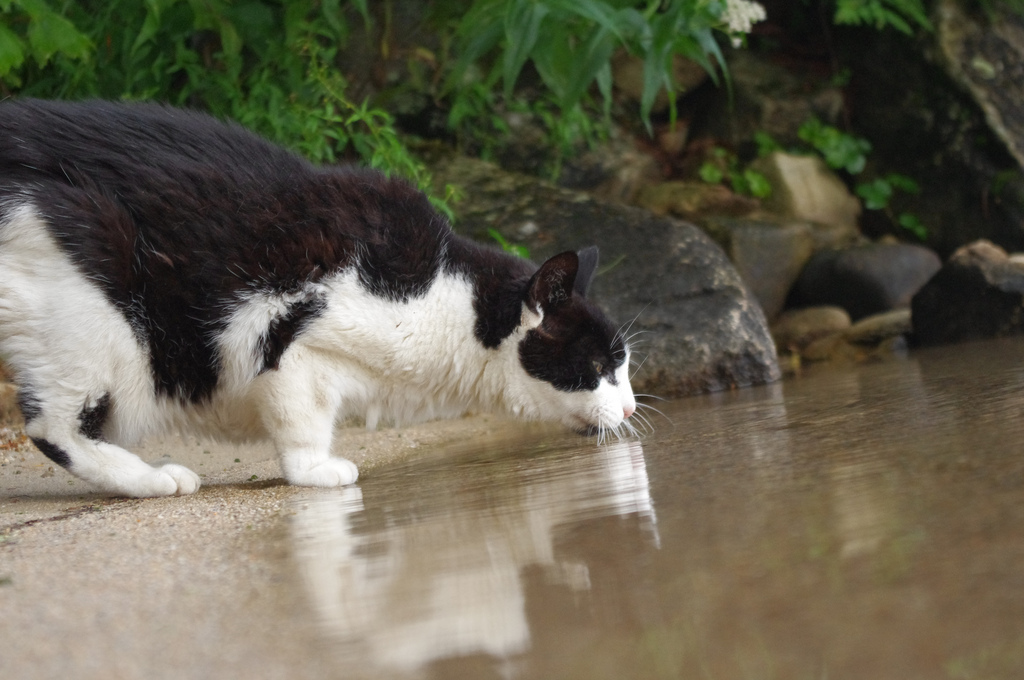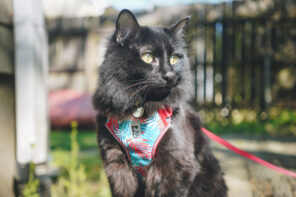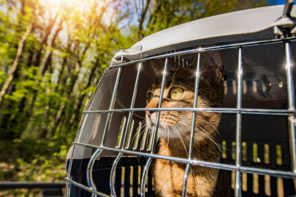Just as you can get dehydrated when out on the trail, so can your adventure cat. Even if your kitty is simply lounging around the campsite soaking up some sun, it’s easy to become overheated and lose fluids.
However, dehydration is more than simply water loss — it’s also a loss of electrolytes like chloride, potassium and sodium, which are necessary for biological processes, so it’s very important to be able to recognize the signs of dehydration.
Dehydration symptoms in cats
- Panting
- Dry gums and mouth
- Lethargy
- Loss of appetite
- Elevated heart rate
- Decreased skin elasticity
One way to test for dehydration is to check the elasticity of a cat’s skin through “tenting.” Simply pinch the skin over a cat’s shoulders and gently pull it up. When released, the skin will snap back into place if the animal is properly hydrated. If the skin stays up or goes back into place slowly, the cat is severely dehydrated and should be taken to a veterinarian immediately.
Learn more about skin tenting in the video below.
Causes of dehydration
While overheating and increased physical activity can both cause dehydration in cats, there are other causes as well. It could simply be due to inadequate water intake or the result of occasional vomiting or diarrhea.
However, dehydration is often symptomatic of other health problems, so it’s important to consult a veterinarian if you suspect your pet is dehydrated.
Cats most susceptible to dehydration are senior cats, nursing cats and cats with cancer, diabetes, hyperthyroidism, kidney disorders or other diseases.
How much water does a cat need?
As a general rule, adult cats should drink about the same amount of water in milliliters as the number of kilocalories they eat each day.
According to WebMD, dry cat food contains 7 percent to 12 percent water, while canned cat food can measure up to 80 percent water. Because dry food contains so much less water than wet food, cats that eat dry food often don’t get as much water as cats that eat primarily wet food.
While it’s imperative that all cats have access to clean drinking water regardless of their diet, it’s especially important to monitor cats on a dry-food diet to ensure they’re consuming enough H2O.
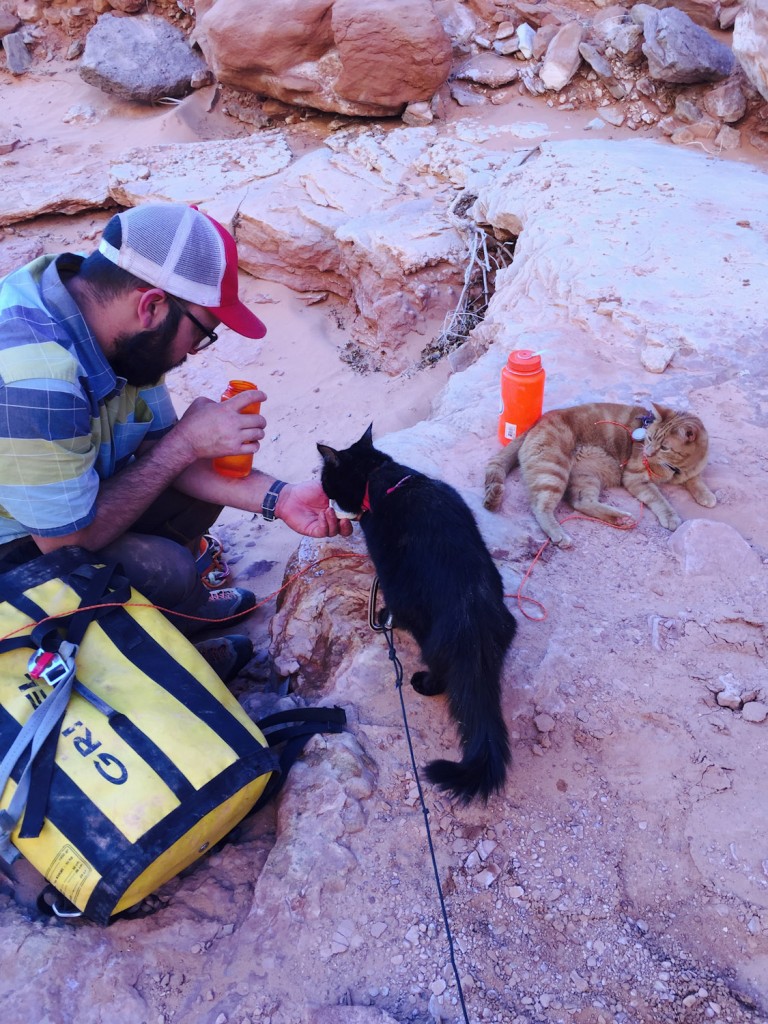
Millie and Kenneth take a water break. (Photo: Craig Armstrong)
Hydration on adventures
Before you head out for a hike or campout with your adventure kitty, check the weather and the trail terrain. If it’s a particularly long or challenging hike, or if the temperatures are high, it might be best for you feline friend to sit this adventure out.
Keep in mind that travel can be very stressful for cats. Motion sickness during car rides can cause nausea and vomiting, which can lead to dehydration, and the stress and low humidity during air travel may also dehydrate a cat. Therefore, it’s important to provide access to clean water if you’re taking a lengthy trip to your adventure locale.
Before embarking on that hike, make sure you’ve packed enough potable water for you and your cat. It’s a good idea to bring the water your cat is accustomed to drinking — your kitty may turn his nose up at water that smells or tastes different. Also, pack something for your cat to drink from, such as a collapsible water bowl. Don’t rely on lakes or streams as your kitty’s water source because such water may contain harmful parasites or bacteria.
Sometimes it can be difficult to get cats to drink, so a great way to get them to increase their H2O intake is to offer them something smelly and delicious they can’t refuse. Pack a can of wet food to tempt your kitty, or try hydration treats like Churu Purées. Water is the main ingredient in these pureed treats, and they come in handy 2-ounce packages that will hardly add any weight to your pack.
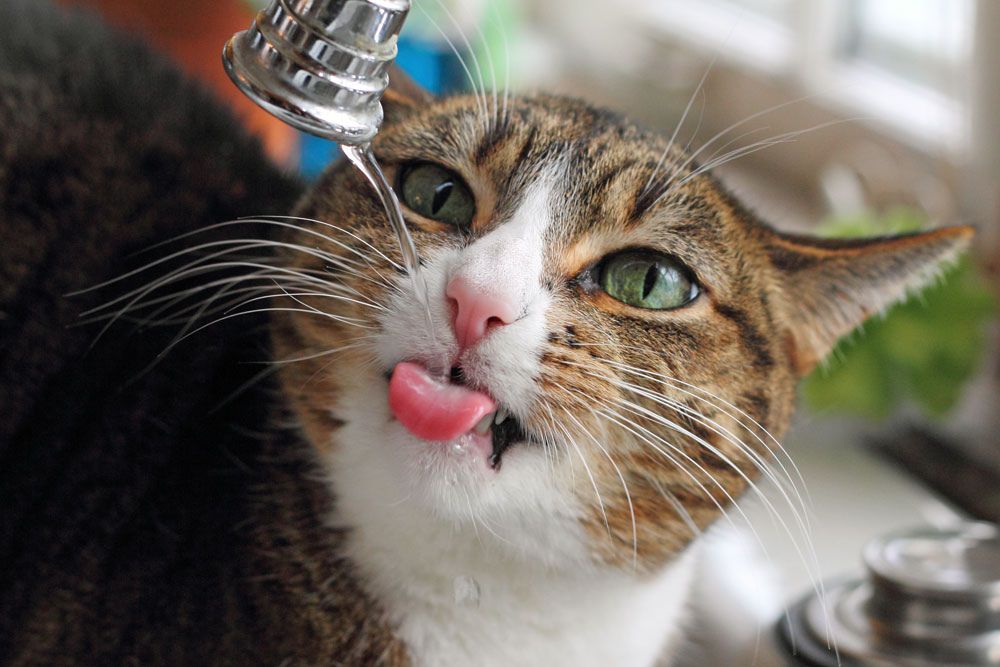
If your cat loves running water, let him take a few sips from the faucet. (Photo:
Teresa Boardman/flickr)
Hydration at home
Your cat should always have easy access to clean drinking water, but you can help ensure your cat is consuming enough H2O by determining if he or she has a preference for their water.
Some cats prefer drinking running water so providing a water fountain may encourage drinking, as will the occasional drink from the faucet. Cats with sensitive whiskers may prefer to drink from wider, more shallow bowls such as Dr. Catsby’s anti-whisker stress bowl.
If your cat needs a little encouragement to drink, try dropping a couple of ice cubes into the water bowl. You can also add juice from canned fish or canned cat food to the water, or use a meat-flavored electrolyte supplement, which you can purchase at a pet store or your vet’s office.
Also, be sure to wash your cat’s bowl often to prevent bacteria growth, and change the water daily.
If you ever notice that your cat is drinking more or less than normal, see your veterinarian.

